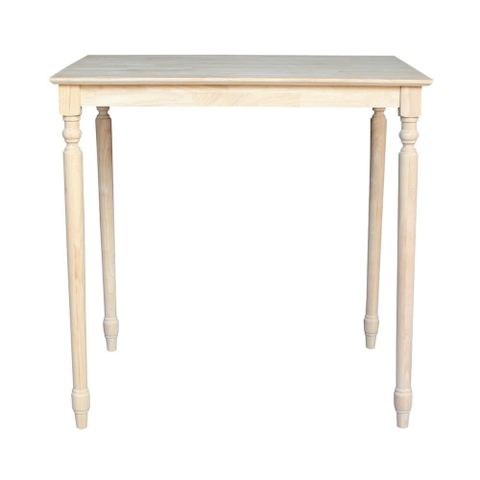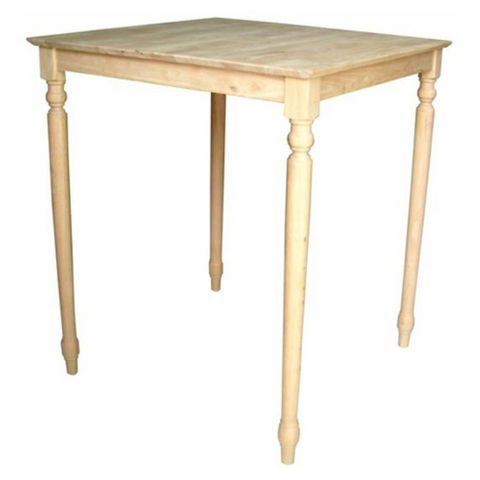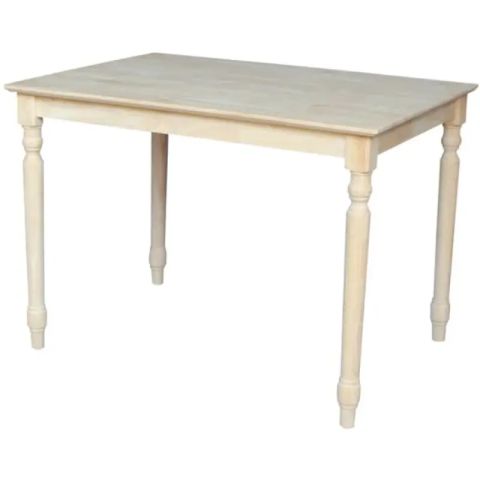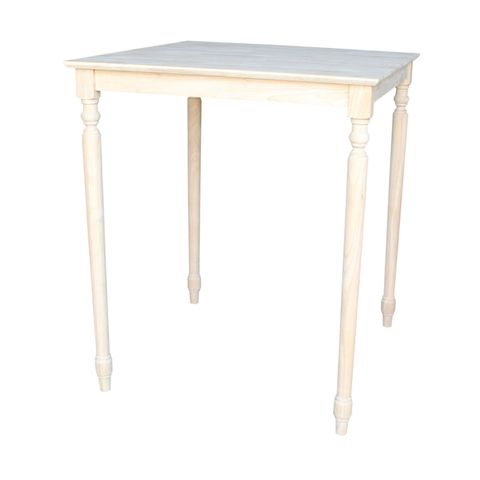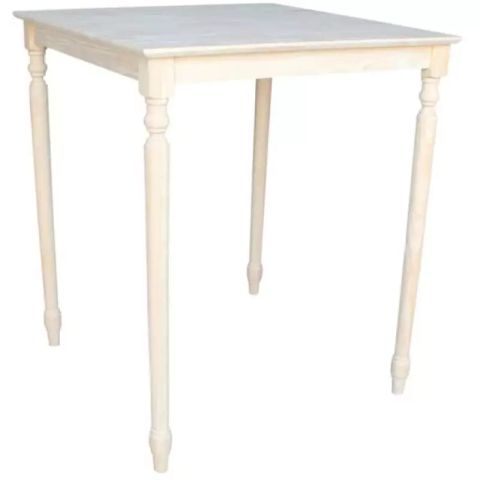There’s a certain warmth and character that only solid wood can bring into a living space. When paired with the classic elegance of turned legs, these tables become more than just furniture; they transform into statement pieces that tell a story. But what exactly goes into the design of these beautiful pieces? Let’s take a closer look.
In a world of fast furniture and fleeting trends, there’s something incredibly grounding about a well-crafted solid wood table. Especially one featuring those graceful, often intricate, turned legs. These aren’t just functional pieces; they’re heirlooms in the making, imbued with history and artistry. Have you ever admired a table and wondered about the thought process behind its creation? We’re going to pull back the curtain and explore the fascinating design details that make solid wood tables with turned legs so enduringly popular.
The Foundation: Choosing the Right Solid Wood
It all starts with the wood. The type of timber selected for the tabletop significantly influences the table’s aesthetic, durability, and even its scent. Oak, for instance, is a classic choice, known for its prominent grain patterns and robust nature. It offers a sturdy and reliable surface, perfect for everyday use and gatherings. Then there’s walnut, celebrated for its deep, rich color and elegant grain. It lends a touch of sophistication and luxury. Maple, with its fine, even grain and lighter hue, provides a more contemporary feel, while cherry wood ages beautifully, developing a warm patina over time. Each wood has its own personality, and selecting the right one is the first crucial design decision. Consider the existing decor of your room and the overall mood you want to create. Are you aiming for rustic charm, modern sleekness, or classic refinement? Your wood choice will set the stage for everything else.
The Art of the Turn: Understanding Leg Designs
The legs are where much of the visual magic happens. ‘Turned’ legs are created on a lathe, where a rotating piece of wood is shaped by skilled hands using chisels and gouges. The possibilities here are vast. You might find simple, tapered legs that offer a clean, minimalist look, perfect for modern or transitional styles. Then there are the more elaborate designs: bulbous, multi-segmented shapes reminiscent of classical columns, or delicate, reeded patterns that add a touch of Old World charm. Some legs feature intricate carvings or decorative rings. The scale and style of the turning should complement the tabletop and the overall design of the table. A heavy, ornate tabletop might call for a more substantial, detailed leg, while a lighter top could be overwhelmed by overly complex turning. It’s all about balance and harmony. Think about how the legs will interact with the space around them – will they feel grounded and stable, or light and airy?
Tabletop Thickness and Edge Profiles: More Than Meets the Eye
The thickness of the solid wood top isn’t just about sturdiness; it’s a significant design element. A thicker top inherently feels more substantial and luxurious, exuding a sense of permanence and quality. It can also accommodate more elaborate edge profiles. Speaking of edges, the way the perimeter of the tabletop is finished plays a vital role. A simple, square edge offers a clean, modern appearance. A beveled edge provides a subtle softening, reducing sharp corners. Other popular choices include ogee edges, which feature a graceful S-curve, or a more traditional bullnose edge that’s rounded. The chosen edge profile can dramatically alter the table’s overall style, from casual to formal. It’s these small details that often elevate a piece from ordinary to extraordinary. Consider how the light will catch the edge and how it will feel to the touch.
Joinery and Construction: Where Strength Meets Beauty
While not always visible, the joinery used in solid wood tables is a testament to craftsmanship and a critical design consideration for longevity. Traditional methods like mortise and tenon joints, where a tenon (a projection) fits snugly into a mortise (a hole), are renowned for their strength and durability. Dovetail joints, though more common in drawers, can also be found in high-quality table construction, showcasing meticulous attention to detail. The way the legs are attached to the apron (the framework beneath the tabletop) and how the tabletop itself is secured are all part of the structural design. A well-constructed table will remain stable and strong for generations. This thoughtful engineering ensures the beauty isn’t just superficial; it’s built to last. Sometimes, you’ll see beautiful joinery featured as a design element itself, a celebration of the maker’s skill.
Finishing Touches: Protecting and Enhancing the Wood
The finish applied to a solid wood table is the final layer of design, serving both protective and aesthetic purposes. Natural oil finishes, for example, penetrate the wood, offering a beautiful, matte look that highlights the natural grain and feels soft to the touch. They also allow the wood to ‘breathe’ and can be easily repaired. Lacquer and varnish, on the other hand, create a harder, more durable surface, often with a higher sheen, offering excellent protection against spills and wear. The color of the finish is another key decision. Will you go for a clear coat to show off the wood’s natural beauty, a light stain to enhance its warmth, or a darker stain for a more dramatic, sophisticated look? Even subtle distressing or antiquing techniques can add character and a sense of history to the piece. The right finish can transform the entire character of the table. It’s the cherry on top, so to speak.
Scale and Proportion: Fitting into Your Space
Finally, let’s talk about scale and proportion. A table that’s too large can overwhelm a small room, making it feel cramped, while a table that’s too small can get lost in a spacious area. The height of the table, the length and width of the top, and the visual weight of the turned legs all need to be considered in relation to the room it will inhabit and the furniture it will sit alongside. A dining table needs ample space around it for chairs to be pulled out and for people to move freely. A coffee table needs to be at a comfortable height relative to the sofa. The proportions of the legs to the tabletop are also crucial for visual harmony. Are the legs slender and delicate, supporting a lighter top, or are they robust and sturdy, anchoring a substantial piece? Getting the scale and proportion right ensures the table not only looks good but functions perfectly within its intended environment. It’s about creating a balanced and inviting atmosphere.
So, you see, a solid wood table with turned legs is a symphony of carefully considered design elements. From the selection of the timber and the artistry of the turning to the subtleties of the edge profiles and finishes, each detail contributes to its overall character and appeal. These tables are more than just places to eat or set things down; they are pieces of functional art that bring warmth, history, and enduring elegance into our homes. When you choose one, you’re not just buying furniture; you’re investing in a legacy of craftsmanship and timeless style. It’s a decision that brings beauty and substance for years to come.

